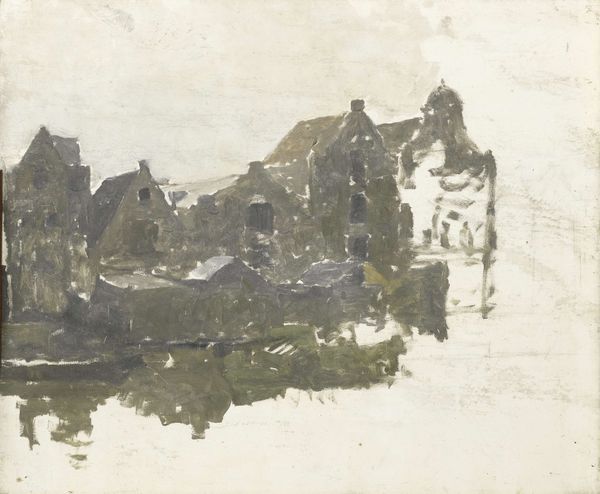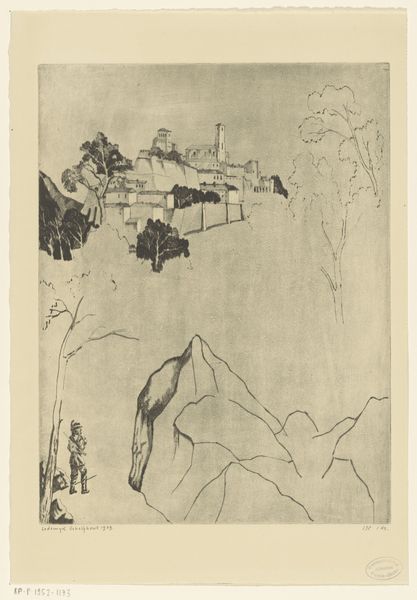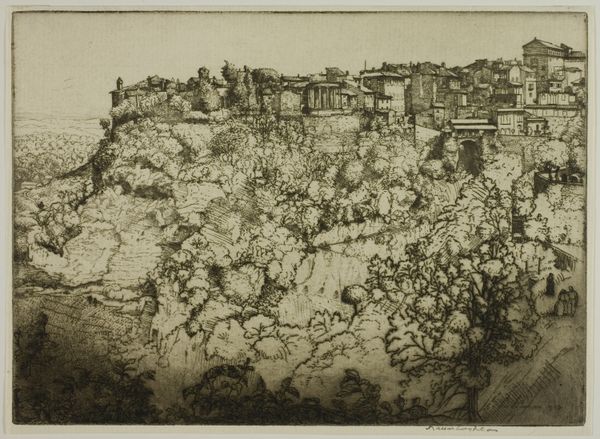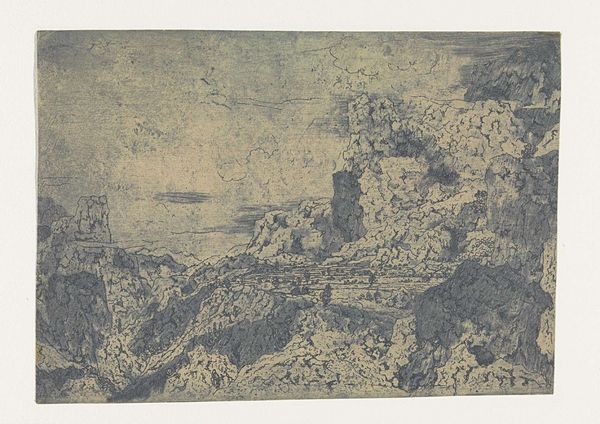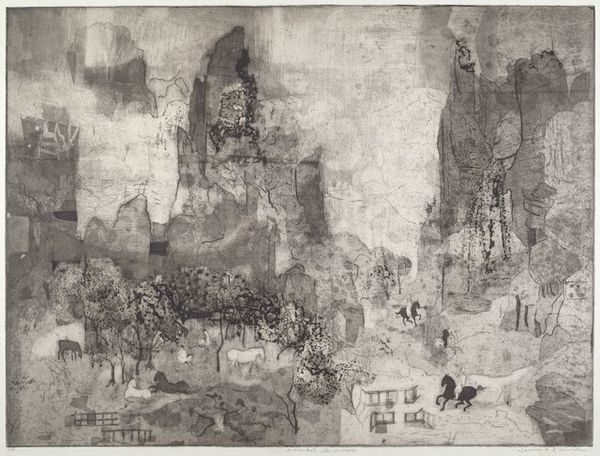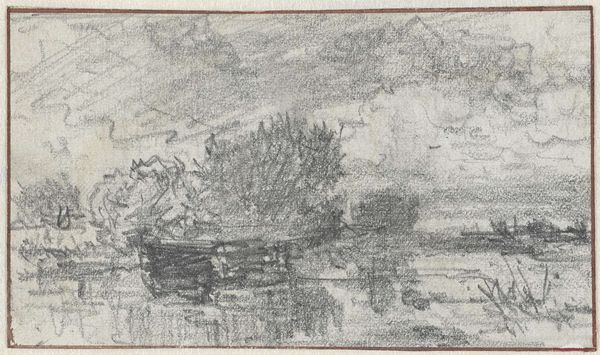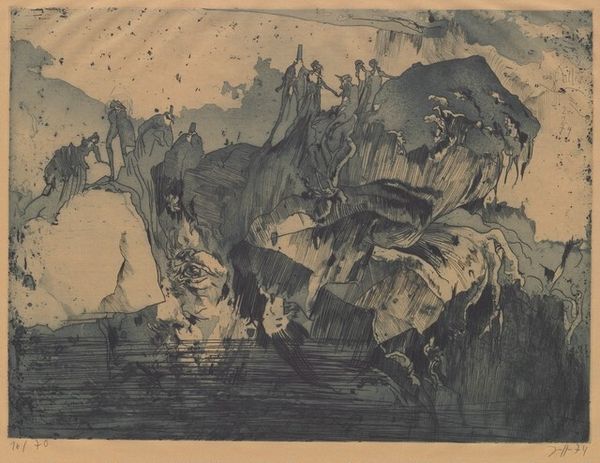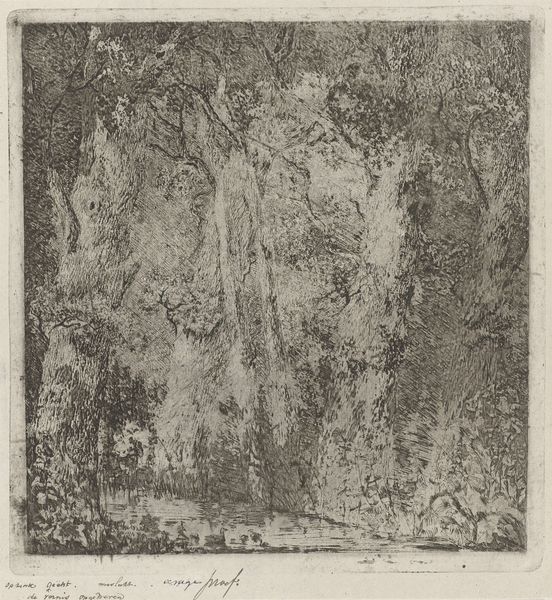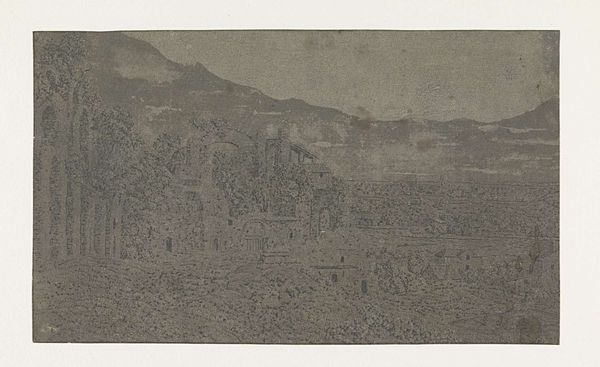
drawing, print, etching, relief, paper
#
drawing
# print
#
etching
#
asian-art
#
relief
#
landscape
#
paper
#
geometric
#
line
Dimensions: plate: 28.89 × 36.04 cm (11 3/8 × 14 3/16 in.) sheet: 39.37 × 46.67 cm (15 1/2 × 18 3/8 in.)
Copyright: National Gallery of Art: CC0 1.0
Curator: Looking at this 1969 etching and print by Jörg Schmeisser, titled "Angkor, Cambodia," the overwhelming feeling I get is of the cycle of decay and rebirth, particularly when viewing this incredible historic site overtaken by jungle. What strikes you upon first seeing it? Editor: The sense of scale here is remarkable; even in this smaller rendering, there's a haunting monumentality juxtaposed with intimate detail. It almost feels like viewing a dreamscape, layers of time collapsing into one another. Curator: Absolutely. The ruins themselves are represented with geometric forms, while the vegetation encroaching on them are detailed, even grotesque at times. Those twisting, almost humanistic roots give us symbolic imagery of nature as an insatiable force, reclaiming what was once human domain. There’s also a history of colonialism in the depiction of lost and forgotten temples. What does that juxtaposition mean? Editor: Exactly, this interplay speaks volumes. Schmeisser's technique—etching—seems particularly suited to this task, imbuing the scene with a sense of time etched into the very material. You read this piece through colonialism, and I agree that the very process of drawing abandoned temples makes the artwork a colonial statement. But in reclaiming sacred sites through image-making, aren't we also reminded that all political statements about sacred temples, including reclaiming, require constant revision? How can such visual and political authority remain grounded? Curator: An astute point! Consider also the implications of printing, creating multiple originals—is that an appropriation or a respectful democratization? The symbolic reading suggests both reverence for what persists but also unease at how nature, indifferent to humanity's intentions, becomes a tomb and cradle simultaneously. Editor: I agree, and in today's world we can look back and ask, do temples persist as "memes", or as meaningful statements about cultural resilience? This image is especially important now, given that its historical context would be so different today. That contrast helps give the print, as a colonial gesture, nuance and sophistication. What do you take away? Curator: It certainly challenges our perspectives on linear time and control; civilizations rise and fall, nature endures. A humbling perspective, I must say. Editor: Definitely, the complexities it unpacks continue to resonate beyond its formal beauty and historical context.
Comments
No comments
Be the first to comment and join the conversation on the ultimate creative platform.

